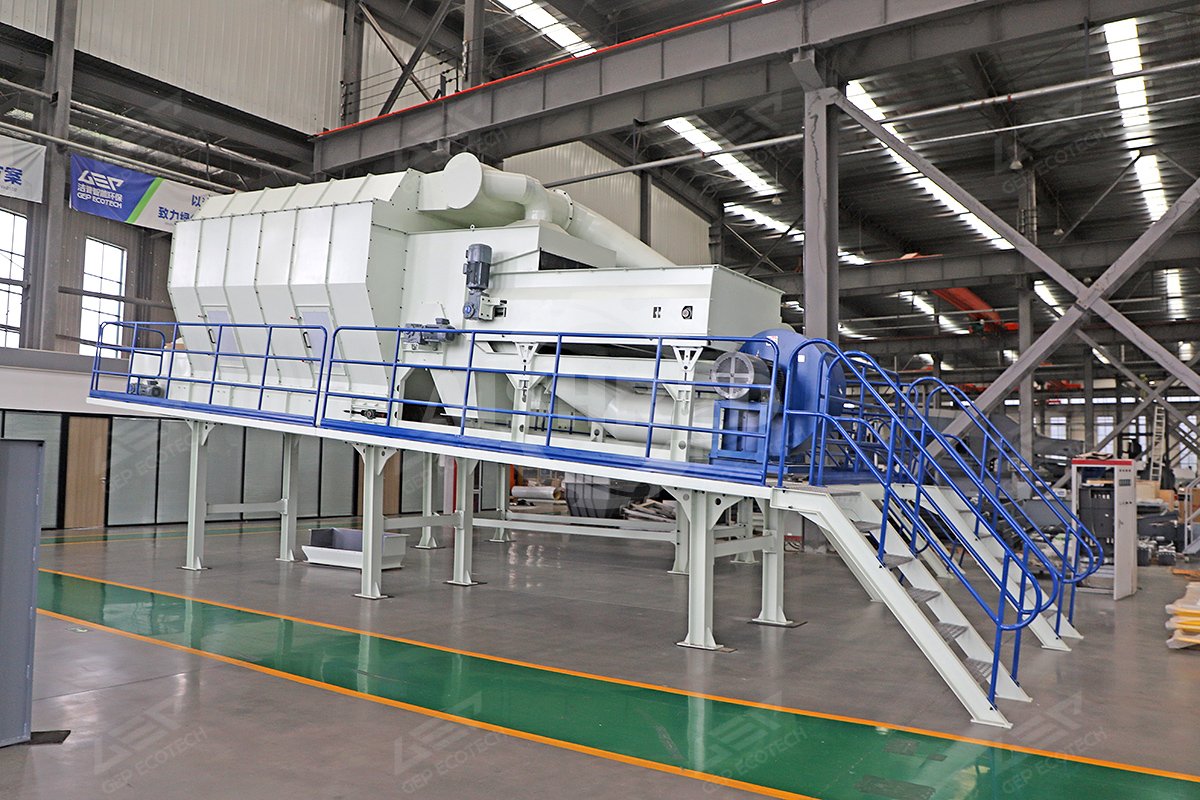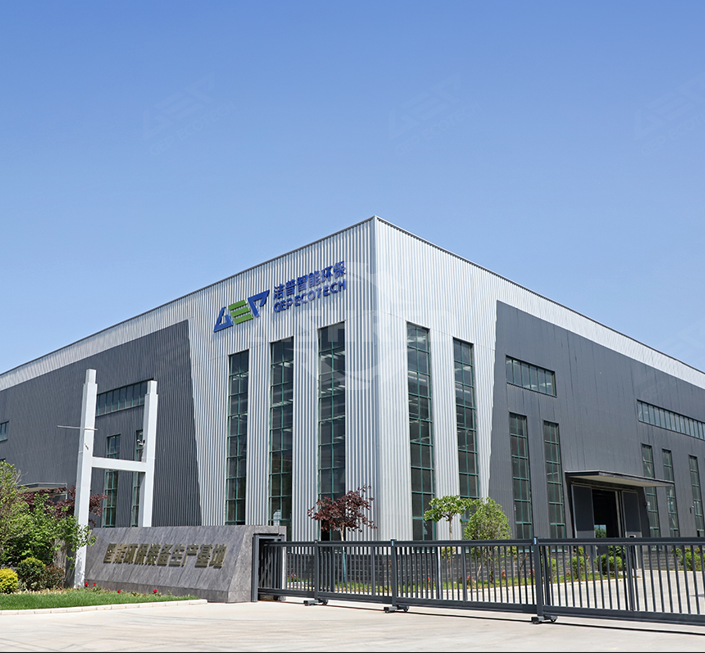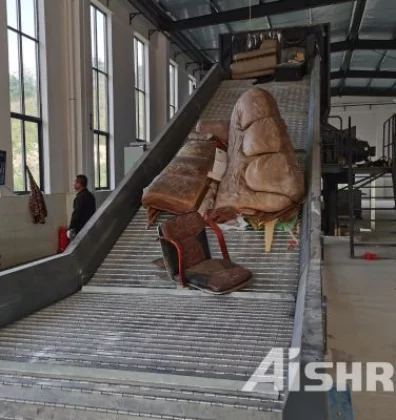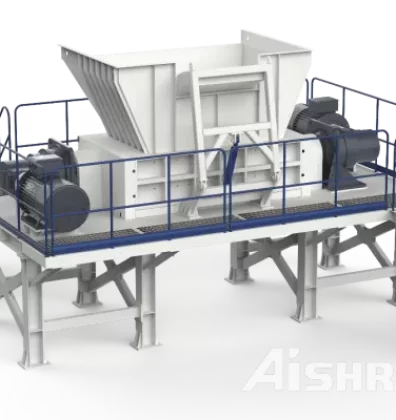In the sorting process of the municipal solid waste disposal line, the wind sifter and the ballistic screen are two core devices, and their working principles and applicable scenarios are significantly different. The choice of which one to use mainly depends on the composition of the waste, the pre-treatment processing, and the final sorting target. Below, we will analyze in detail the applicable situations and advantages of both:
Wind Sifter
Working principle
By utilizing the differences in aerodynamic characteristics (such as density, size, shape, resistance) between materials and impurities (mainly light substances), they are separated through controllable airflow. Light matter is carried away by the airflow, while heavy matter falls due to gravity.

Applicable situations
The sorting target is light debris: when the main purpose is to separate light substances such as plastic film, paper, paper, fibers, and small plastic sheets from the shredded waste.
The material has been fully shredded: the waste has been shredded to a certain size (usually less than 200mm or smaller), allowing lightweight materials to be effectively blown up by the airflow.
The moisture content of the pre treated material is relatively low: if the material is too wet (such as untreated kitchen waste), light substances will stick together into clumps or become heavier when wet, seriously affecting the efficiency of air separation. Therefore, wind selection is usually located after equipment such as drum screens and crushers to process relatively dry materials.
Accurate separation of light and heavy substances is required: to improve the purity of subsequent processes, such as removing light plastics from heavy substances (organic matter, glass, metals, etc.) and improving the quality of compost raw materials; Or further separate recyclable materials from light substances.
Advantages
- Efficient separation of light substances: The separation efficiency of light floating materials such as film plastics and paper is very high, which is difficult to replace by other physical sorting methods.
- Large processing capacity: The equipment can operate continuously and is suitable for large-scale disposal lines.
- Can sort irregularly shaped materials: particularly effective for irregular light materials such as flakes and films.
- High degree of automation: By adjusting the wind speed and pressure, more accurate sorting can be achieved.
Ballistic Screen
Working principle
Sort materials based on their density, elasticity, and hardness differences. The high-speed vibration with elastic screen plate of the equipment, materials with hard texture, low density, and good elasticity (such as plastic bottles, cans, and hard plastics) will gain greater kinetic energy and "bounce" forward, becoming the screened material; Materials with soft texture, high density, and poor elasticity (organic matter, ceramics, stones, wet waste) are attached to the screen surface and transported by vibration or discharged as undersized materials.

Applicable situations
The sorting targets are rigid plastics and organic matter: when the main purpose is to separate crushed hard plastics (such as PET bottle fragments, HDPE bottle caps), rubber, wood, etc., and separate them from heavy, fragile, and inelastic materials such as kitchen waste, soil, glass ceramic fragments, etc.
Materials do not need to be extremely dry: Ballistic screens have much higher humidity tolerance for materials than air purifiers. Even if the material contains a certain amount of moisture, as long as there is not a large amount of adhesion, it can still be effectively sorted according to elasticity and density.
Pre-processing: commonly used as a key dry wet separation process after pre-treatment, the waste is roughly divided into "dry components" (recyclables, RDF fuel) and "wet components" (organic matter, used for composting or anaerobic digestion).
Alternative or supplementary drum screen: For materials of similar size but different materials (such as small plastic sheets and small stones), trommel screens cannot distinguish them, while ballistic screens can separate them based on differences in elasticity and density.
Advantages
- Excellent dry wet separation ability: It is the core equipment for sorting "dry waste" and "wet waste".
- Not sensitive to humidity: It is more adaptable to household waste with complex composition and uneven humidity than air purifiers.
- Effective sorting of three-dimensional materials: Excellent sorting effect on rigid containers such as bottles, cans, and boxes.
In summary, when our main goal is to remove or recycle light and floating films and paper sheets, the wind sifter is the most suitable; When our main goal is to separate dry, hard, and elastic things from wet, soft, and heavy things, ballistic screens become a better choice.
GEP ECOTECH has rich experience and numerous successful cases in the field of MSW recycling. If you are looking for intelligent disposal solutions and equipment suppliers for MSW, GEP ECOTECH is honored to provide you with our full lifecycle services and become your trusted partner, working together with you to achieve the goals of waste recycling, harmlessness, and reduction!



